
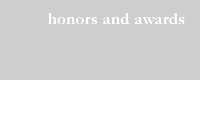
1/2006

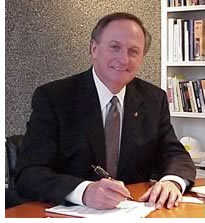 Norman L. Koonce, FAIA,
looks back over his seven-year tenure as the AIA’s chief executive
and shares some insights gained as well as visions of the future. There
have been successes, surprises, and real challenges, most of which have
been energizing, he says.
Norman L. Koonce, FAIA,
looks back over his seven-year tenure as the AIA’s chief executive
and shares some insights gained as well as visions of the future. There
have been successes, surprises, and real challenges, most of which have
been energizing, he says.
AIArchitect: What have been your proudest accomplishments as the AIA EVP/CEO?
Koonce: That question could more appropriately be asked: “What have been OUR proudest accomplishments?” Many members of the AIA national component staff have been involved in the attainment of each and every accomplishment achieved. Progress has come through team efforts.
I believe measurable strides have been made in the area of more collaborative relationships among components—local, state, and national. Achieving a truly collaborative, respectful spirit represents a part of what we mean when we refer to “One AIA.” Establishment of the Component Relations Team at the national component signaled a desire to create a mutually supportive attitude among all components. I believe there really is increasingly a mutually supportive attitude among the folks who work at 1735 New York Avenue and their colleagues in components across the country and around the world. The eventual goal is to achieve a solid AIA family spirit that permeates all of our relationships. We work better and share more under those conditions.
Speaking of sharing, the most tangible element of that attribute is the greater amounts of revenue being shared among the components—currently more than $4 million annually from AIA Contract Documents, the Job Board, and other revenue generators. Soon to be included in that mix will be grants for AIA150 legacy projects in components. The Blueprint for America initiative has the potential to significantly enhance relationships among all components as they share common goals and tasks, which will create a deeper sense of camaraderie and mutual respect.
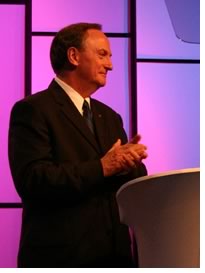 We know from branding research that the essence of individual AIA-member
participation and perceived benefits occur at the local component level.
By never losing sight of that fact, we will enhance the focusing of programmatic
benefits, resources, service and employee-benefits standards, and meaningful
partnerships at the local components.
We know from branding research that the essence of individual AIA-member
participation and perceived benefits occur at the local component level.
By never losing sight of that fact, we will enhance the focusing of programmatic
benefits, resources, service and employee-benefits standards, and meaningful
partnerships at the local components.
The work of the Component Partnerships Committee in recent years has been instrumental in identifying the issues, perceptions, needs, and opportunities that must be addressed for the Institute to move forward on all fronts; indeed to achieve the desired status of “One AIA.” The preparation has been thorough. Much has been identified that now needs to be achieved.
Another significant accomplishment has been the consistent refinement of the AIA strategic planning process and the resulting multi-year Strategic Plan. A Continuity Conference held each year by an evolving list of the three most recently elected AIA presidents who will serve consecutive terms, with the EVP/CEO, has greatly enhanced the Institute’s continuity of purpose and direction. Rather than shifting gears and dramatically changing directions organizationally each year, these AIA leaders have advocated an appropriate long-term focus of the Institute’s strategic vision while allowing for necessary incremental changes to accommodate important emerging issues. This has resulted in a more concise plan for each year’s work as well as implementation of a staffing plan that allows staff to continue working within established roles and responsibilities from year to year. Further, the national component’s Strategic Plan can now serve as guide for the development of appropriate strategic plans for each local and state component.
A third major accomplishment, of course, has been overcoming the debilitating financial difficulties that were encountered during the early part of my tenure. No one had realized how bad the situation really was. The solution was found in applying discipline, reinstating the Finance and Audit Committee, working through teamwork, tightening belts, reducing staff, controlling expenses and contracts, fully disclosing existing conditions, and accepting assistance from true friends of the Institute. The Board and management worked hand-in-glove to overcome the crisis. There exists today a solid resolve to preclude any future recurrence of financial difficulties.
One other accomplishment I do not want to leave out, because it is critical to how the AIA speaks to the world. I am talking about the recent updating and clarifying of all AIA public policies. The important work by the Board, officers, and staff that went into this effort has provided the value framework for the AIA’s growth in the essential areas of public and government advocacy.
AIArchitect: Were there any major surprises during your tenure?
Koonce: Certainly! Number one: the financial condition of the Institute was a major surprise. It continued to manifest itself in many ways before net assets were restored and revenues were produced to cover all expenses. An element of the dilemma, and certainly a surprise, was AECdirect, which met its demise in the midst of dot-com failures.
I was surprised by the degree of lack of trust and limited interaction between local and state component leaders and what was then called AIA headquarters, now referred to as the national component of the AIA. Of course, I was aware we had problems that get in the way of working collaboratively, but I had no idea that trust was as absent as I found it to be.
Another challenge that caught me by surprise was the terrible ills of the AIA Membership Data Base and Dues Collection System. I had been assured just as I assumed the interim position of chief executive of the AIA that all of that system’s deficiencies had been corrected. Wow, did I find out how far from the truth that was when I attended my first Grassroots meeting as the CEO.
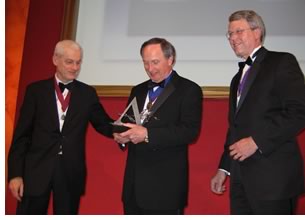 Another
surprise surfaced at that same Grassroots meeting. Attempts to distribute
AIA Contract Documents in electronic format were falling far short of
expectations. Difficulties in loading and using the documents were threatening
the future of one of the Institute’s most valuable resources.
Another
surprise surfaced at that same Grassroots meeting. Attempts to distribute
AIA Contract Documents in electronic format were falling far short of
expectations. Difficulties in loading and using the documents were threatening
the future of one of the Institute’s most valuable resources.
I feel very good about these challenges were turned around during my watch through valuable partnerships with seven Boards of Directors and their officers, an exemplary Executive Office corps, a well-qualified AIA national component staff, elected and management staff from so many local and state components, and scores of stakeholders and friends who want to see the AIA prosper. From 1999 through today, the AIA has seen an 80-percent-plus increase in revenues, 18-percent increase in membership, Contract Documents whose delivery system and content are robust, not needing our $5.5 million bank line of credit during the past three years, systems that work—all because of people who care and continued to be committed to helping our members to prosper.
AIArchitect: What are three major areas where you foresee development within the profession over the next decade?
Koonce: One, of course, is technology. As we heard at the AIA 2005 Convention, building information modeling will change the way many architects will design and document their projects and integrate them through the construction and occupancy processes. I also see great opportunity beyond just design and construction technology. Architects have an outstanding opportunity to assume the lead role as the owner’s agent, assisting owners in the preparation of a thorough, complete, concise, and dependable body of knowledge that defines all expectations for the design, construction, and operation of their future facilities. This is essential in the interest of precluding the majority of change orders, time delays, and cost overruns in projects—the owners’ greatest concern. The AIA should redouble its efforts to develop appropriate protocols and mechanisms that will enable architects to excel in that profitable role. The Integrated Practice team is making great strides now.
A second area of development I foresee is in the shared risk and shared rewards relationships that are going to come into place in the next few years with the greater sharing of knowledge among all project stakeholders. We cannot be successful there, however, with the sometimes defensive and disagreeable relationships that exist among the various elements of the construction teams. The AIA should advocate for greater unity. Someone must lead the way into the area of greater sharing of risk and reward among the design and construction teams.
Further, I see the need for continued significant development in the area of resources and mechanisms for accommodating, welcoming, and compensating emerging professionals. They should be integrated into the profession more smoothly and quickly while receiving all the preparation needed in theory and practice. A strong mutual commitment by the profession and the academy to this end is essential. Integration of preparation through development of elements such as teaching firms and practice academies may be the solution.
 AIArchitect: What advice would you give your successor, Christine McEntee?
AIArchitect: What advice would you give your successor, Christine McEntee?
Koonce: Chris McEntee is a proven and successful leader in her own right. She has shared the essence of some very impressive and exemplary concepts that she will be working toward implementing. I am confident she will provide valuable leadership for the AIA.
But if I were to respond to your question more directly, my answer would come from recalling some of the elements that gave me a stronger sense of my own place within the AIA management team; chiefly, developing a passion for what architects do and helping to shape the environment in which they can function most effectively. You would expect me to add that it is essential to believe that architecture has the power to elevate and enrich the human experience. Another important element that shaped my own outlook has been to respect and be eager to help the AIA’s local and state components in every way possible. Finally, it is essential to rely on the Board officers and directors to set the strategic vision for the Institute, recognizing that it is their job to set the Institute’s vision, and the EVP/CEO’s and management’s job to succeed in achieving that vision.
Chris already knows these basic tenets and will excel in applying them.
AIArchitect: If you were going back to professional practice, what would you do to strengthen your business now?
Koonce: It is not likely that I will consider entering a firm to practice in the traditional sense because I have been away from that for so long. But, if I did, I would find the brightest and best professionals to partner with. More likely, however, I would reflect on the fact that knowing design decision-making principles offers many opportunities for assisting others in making key decisions on diverse issues for clients who have unusual needs.
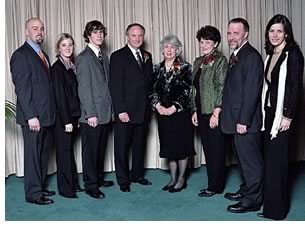 AIArchitect: What will you be looking forward to in the coming years?
AIArchitect: What will you be looking forward to in the coming years?
Koonce: It’s too early to be totally definitive at this time. Just settling into a routine or life style that is much less intense than the schedule I have experienced for the past several years is a goal. Sue and I have a strong desire to visit, to celebrate with, and to help family members. And there are friends with whom we would love to spend more time. We would also like to resume teaching a Bible class for young adult couples now we have preparation time. It appears I will likely assume some role in the AIA150 Capital Campaign. I have been invited to join two very exciting not-for-profit boards. There is a possible notion to do some writing and then there is neuroscience and architecture. I’m tired just thinking about it, especially after seeing Sue’s Honey Do list for me.
AIArchitect: If you could change one thing about the AIA, what would it be?
Koonce: That’s a question that I’d normally like to give more consideration. But one thing I have thought about often is that each member of the architecture profession would benefit greatly if we all had greater respect for each other and if we enthusiastically shared the best of what we know and do with the entire profession. We cannot build ourselves up by pushing another down, yet we don’t seem to collectively subscribe to that notion. On the other hand, caring and sharing will create a rising tide that lifts all boats (our profession). Remember, you can’t sink half a ship. Could it be that each architect is in some way responsible for the reputation and success of all architects?
I was impressed yesterday when I saw the data from AIA Government Advocacy research that showed architects have the very lowest percentage of people who indicate no respect for their profession—only one percent indicated they have no respect for architects. No other profession was close. So we have that deep esteem working for us. Could pride in our own profession help us to reach even higher?
AIArchitect: What is the best thing you are taking with you?
Koonce: This one is really difficult. Perhaps I can talk about some of the best things I’m taking with me.
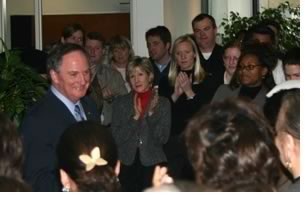 At the top of the list is something very personal: an appreciation for
the recognition of Sue’s contributions to the profession—as
my spouse—when she was made an AIA Honorary Member. That is very,
very rewarding for both of us. But I’m also taking with me strong
friendships with and respect for members and officers of the AIA Board,
the national component staff, the local and state components, the members
at large, and a lot of stakeholders as well.
At the top of the list is something very personal: an appreciation for
the recognition of Sue’s contributions to the profession—as
my spouse—when she was made an AIA Honorary Member. That is very,
very rewarding for both of us. But I’m also taking with me strong
friendships with and respect for members and officers of the AIA Board,
the national component staff, the local and state components, the members
at large, and a lot of stakeholders as well.
I suppose the overriding thing that I’m taking with me is an awareness and appreciation of the magnificent capabilities of our profession—a profession that is small enough for all of its members to fit into the seats of a single football stadium but is large enough to influence every person in this nation and many more around the world. That is an amazing revelation that you begin to understand the more you work with and see the accomplishments of so many of our members. I am glad I have had that revelation.
And, on a very personal note, I take with me a most sincere and humble appreciation for the opportunities I have had to serve this wonderful profession for 7 years at the AIA and 10 years at the Foundation. Please accept my gratitude and God bless you all.
Copyright 2006 The American Institute of Architects.
All rights reserved. Home Page ![]()
![]()
![]()